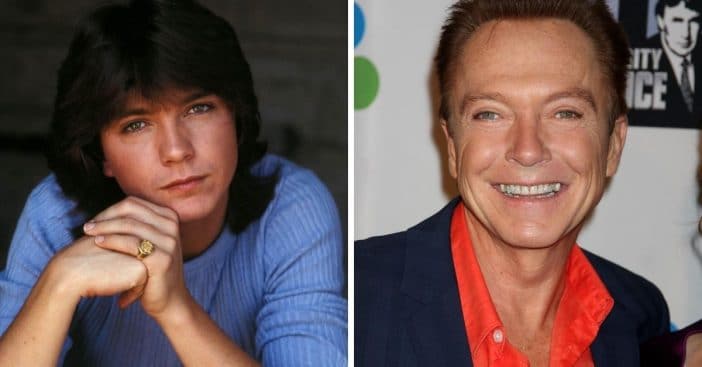
A soft-lit vow in the middle of a whirlwind—David Cassidy sings past the noise and asks you to believe in tomorrow on “Blind Hope.”
Start with the anchors that matter. “Blind Hope” is track four on Cherish, David Cassidy’s debut solo LP for Bell Records, recorded at Western Recorders (Studio 2) in Hollywood and released in February 1972 in the U.S. (March in the U.K.). Written by Adam Miller and produced by Wes Farrell, the cut runs a shade over 3:14—an album piece rather than a chart-chasing single. In America, it lived on the flip side of Cassidy’s hit “Could It Be Forever”; that A-side climbed to No. 37 on the Billboard Hot 100, while in Britain it paired differently (with “Cherish”) to surge to No. 2 as a double A-side—context that explains why “Blind Hope” itself carries no separate singles peak. The parent album did just fine on its own steam, reaching No. 15 on the Billboard 200 as Cassidy stepped out from the Partridge Family halo.
There’s pedigree in the room. Farrell stocked the sessions with the same top-drawer Los Angeles players who anchored so many early-’70s pop-soul sides: Hal Blaine at the kit, Mike Melvoin on keys and arrangements, guitar aces Larry Carlton, Louis Shelton, Tommy Tedesco, and Dennis Budimir, with the Love Generation (arranged by John Bahler) feathering the background vocals. That cast didn’t overwhelm the songs; they steadied them, letting Cassidy live in a blue-eyed-soul pocket that felt warmer and more adult than his TV-born fame might have suggested. You can hear that restraint all over “Blind Hope”: drums that glide instead of strut, guitars that answer rather than argue, harmonies that lift without crowding.
As for the story behind the tune, it begins with its writer. Adam Miller was one of Farrell’s go-to songsmiths in this period, contributing multiple pieces to Cherish (“I Lost My Chance,” “Where Is the Morning”). With “Blind Hope,” he handed Cassidy a lyric that walks a beautiful line between realism and faith: no grand declarations, just the stubborn promise that if two people keep showing up, the weather will turn. The fan-site lyric sheet catches the gist—“don’t you believe in blind hope… someday, somehow, things will pass our way”—simple words shaped for a voice that could sell nuance as easily as sparkle. Tellingly, Miller later cut his own cover of the song, a quiet nod to the strength he heard in Cassidy’s first reading.
What makes the record glow after all these years is tone. Cassidy doesn’t push; he leans—slightly behind the beat, a hint of husk in the upper register, trusting the melody to carry what the lyric only suggests. There’s a lived-in steadiness to the performance that older listeners recognize immediately: this is not a teenager begging at the door; it’s a young man asking gently for patience, promising to meet you in the middle. The arrangement keeps faith with that mood. Listen for Melvoin’s electric-piano shimmer under the chorus and the way the rhythm section breathes in long phrases; the whole track feels like evening light crossing a living-room floor, unhurried and sure.
Context matters, too. Cassidy’s move into solo work in 1971–72 was about broadening the palette: familiar melodies, yes, but framed with R&B colors and studio craft that favored feel over flash. The singles did the advertising—“Cherish” (U.S. No. 9, AC No. 1) and “Could It Be Forever” (U.S. No. 37, U.K. No. 2 with “Cherish”)—while album cuts like “Blind Hope” did the persuading, the late-night work of turning listeners into loyalists. That’s part of why Cherish held its ground on the charts and in memory: the hits brought you in; the back-half warmth convinced you to stay.
If you spin it now, the meaning lands the way good advice from an old friend does—without fanfare. The title sounds almost naïve until you’ve needed it; then it reads like moral courage. “Blind hope,” the song suggests, isn’t denial. It’s a decision to nurture what’s tender even when evidence is thin, to keep a lamp burning while the world sorts itself out. Set amid the hit machinery of 1972, that’s a quietly radical stance. And in Cassidy’s hands—framed by players who know when silence says more than a cymbal crash—the idea turns from sentiment into comfort.
There’s a final grace note worth keeping. Though “Blind Hope” never chased radio on its own, it keeps showing up wherever fans revisit the Bell era: on reissues, streaming editions, and even as the unexpected B-side glued to a hit that did the climbing. Songs like this don’t need a column of chart numbers to last; they survive because people remember how a room changed as the first verse settled in. That’s the legacy here. In just over three minutes, David Cassidy and his studio family built a modest, glowing space where two ordinary words—keep believing—sound not like wishful thinking but like a way to live.